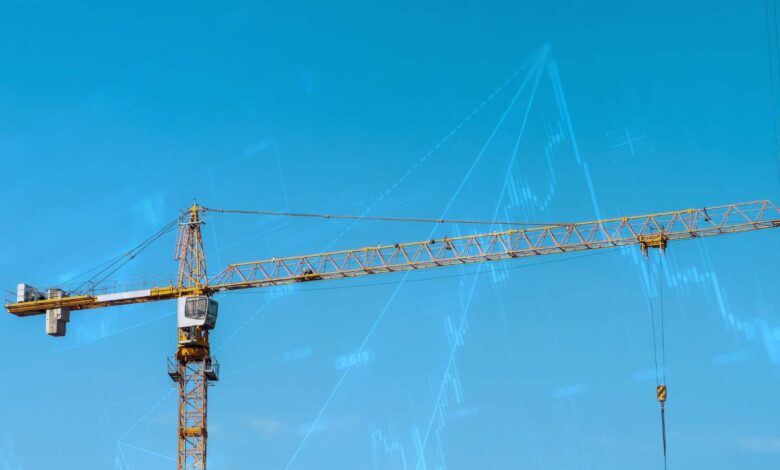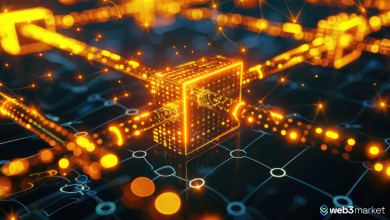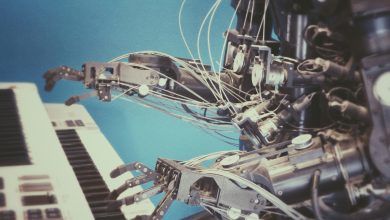
In the space of a week in January, we saw the future of AI take shape. The United States announced a $500 billion initiative to build next-generation AI infrastructure, and days later, a Chinese startup demonstrated an AI model that rivaled the world’s best at a fraction of the cost. But this juxtaposition reveals a crucial truth that many are missing: While software breakthroughs can come from anywhere, the physical infrastructure of AI will determine who leads the next technological revolution.
The Physical Reality: Why AI’s Future Depends on Infrastructure, Not Just Algorithms
The conventional wisdom about AI focuses almost entirely on software—large language models, neural networks and machine learning algorithms. But here’s what that misses: No matter how efficient AI models become, the fundamental physics of computing won’t change. The chips that power AI are getting hotter and denser with each generation. The latest AI processors generate more heat than anything we’ve previously tried to cool in computing history. The challenge lies not in software but in fundamental physics and engineering, problems that will only intensify.
This transformation is creating entirely new categories of jobs and expertise. The data centers of the AI age won’t be run by traditional IT managers and facilities staff. They’ll require thermal engineers who understand two-phase cooling systems, power systems architects who can design microgrids, and infrastructure strategists who can plan for computing densities we’ve never seen before. The experts in these facilities won’t need specialized HVAC certifications—they’ll need to understand how to manage complex, integrated cooling and power systems that more closely resemble a modern factory than a traditional server room.
Too many data center operators are hesitating, waiting to see which AI technologies “win” before making major infrastructure investments. This is a dangerous miscalculation. The infrastructure requirements for AI aren’t theoretical or dependent on which models prove most successful. They’re a physical reality that requires immediate action.
Consider what’s happening in Texas, where some of the largest AI projects are underway. The existing power grid cannot support the energy demands of these new facilities. The power constraints are driving a fundamental rethinking of power generation. The next generation of data centers will likely require their own small modular nuclear reactors or dedicated renewable energy systems. Simply connecting to the existing grid and adding some backup generators is becoming obsolete.
This infrastructure challenge is spawning an entire ecosystem of American innovation. While headlines focus on AI software companies and chip makers, the real transformation is happening across multiple industries. Real estate companies are reimagining data centers. Power companies are developing new generation facilities specifically for AI computing loads. And companies like ours are developing advanced cooling technologies to handle the unprecedented heat these systems generate. This wave of investment echoes previous American infrastructure booms like fiber-optic cables and fracking, with companies across sectors racing to build the foundation for our AI future.
America’s Infrastructure Moment: Building Competitive Advantage Through Innovation
The data center operators I talk to broadly fall into two camps. The sophisticated ones understand they need to become technology leaders, not just infrastructure providers. They’re aggressively implementing next-generation cooling systems and power infrastructure. The hesitant ones are waiting for others to move first. But in this race, waiting creates vulnerability. While software innovations can be quickly replicated, physical infrastructure creates lasting competitive advantages.
By 2030, I predict we’ll see AI data centers that look radically different from today’s facilities. They’ll have their own power generation, advanced two-phase cooling systems that handle 10 times today’s computing density, and automation systems that manage the complex interplay of power, cooling, and computing resources. The companies that start building this infrastructure now will have an insurmountable lead over those that wait.
The parallels to previous American infrastructure revolutions are instructive. The transcontinental railroad wasn’t just about laying tracks—it sparked innovations in everything from refrigeration to time zones. Similarly, today’s AI infrastructure buildout is creating cascading opportunities for American innovation. The refrigerated rail car transformed the American beef industry, and the infrastructure we’re building today will enable breakthroughs in everything from drug discovery to climate modeling.
The decisions data center operators and technology leaders make now will shape American technological leadership for decades to come. We can’t afford to wait and see how AI technology evolves. The physics challenges aren’t going away, and the infrastructure advantages we build today will determine who leads the AI revolution tomorrow.
This is America’s infrastructure moment. Data center operators must stop being passive observers and start being infrastructure innovators. The future of American technological leadership depends on it.




